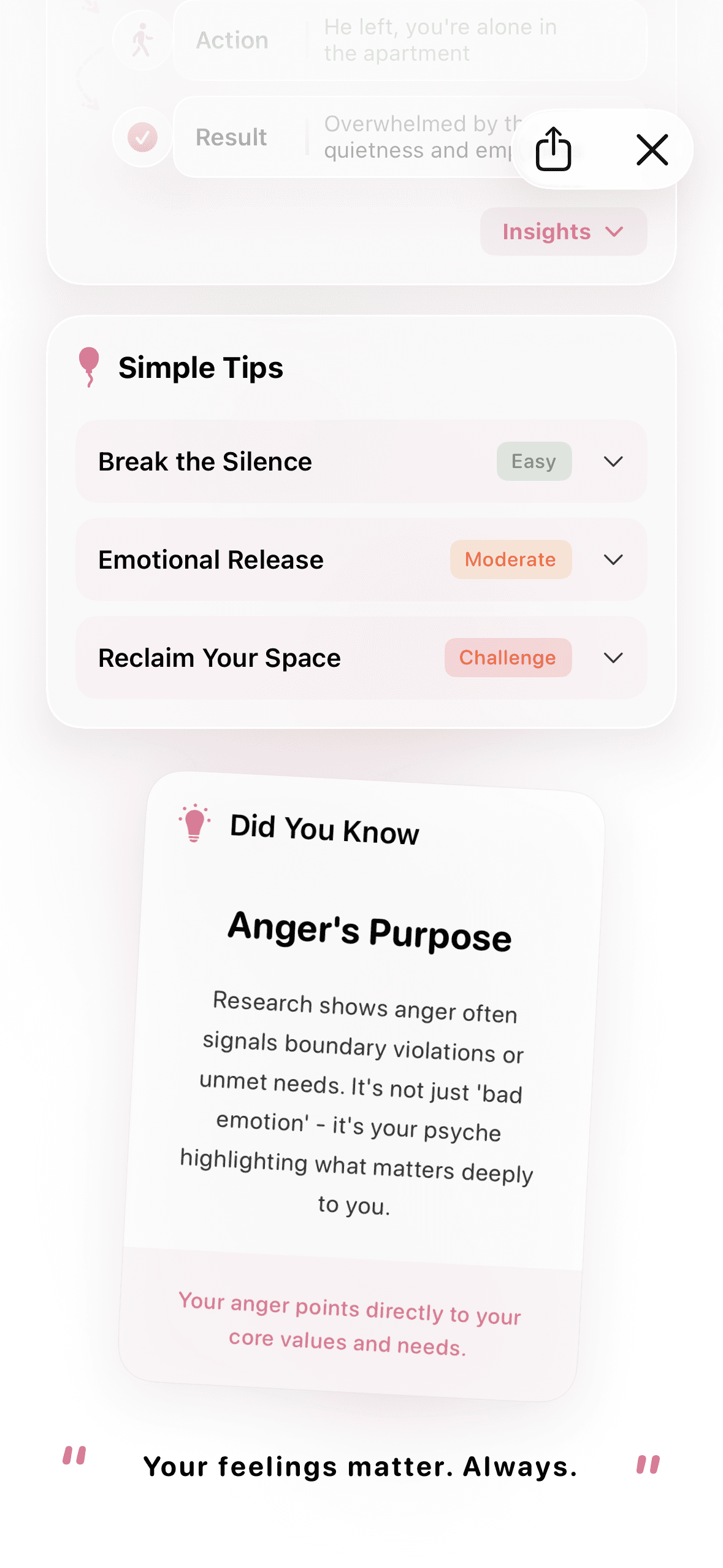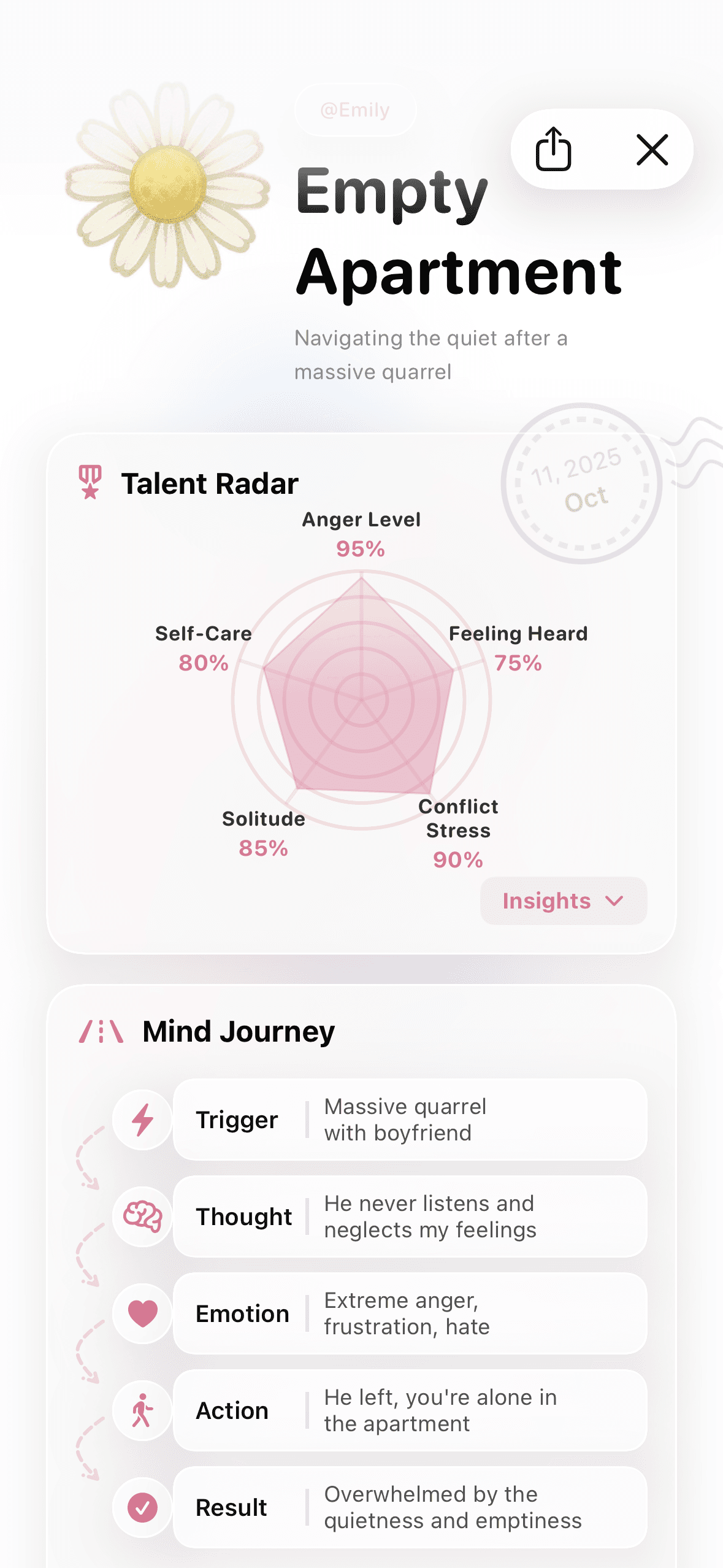The Evolution of Journaling
Today's choice: traditional pen and paper or AI-powered digital journaling? Let's explore both to help you find your perfect fit.
Traditional Journaling: Pen & Paper
Benefits
- Cognitive boost: Handwriting enhances memory and emotional processing
- Complete privacy: No digital footprint, passwords, or data concerns
- Sensory experience: The physical act can be grounding and therapeutic
- Creative freedom: Doodle, paste memories, use colors
- No tech barriers: Works anywhere, anytime
Challenges
- Can be lost or read by others
- Hard to search past entries
- No automatic pattern insights
- Requires physical storage
AI-Powered Digital Journaling
Benefits
- Intelligent guidance: Personalized prompts based on your emotions
- Pattern recognition: Identifies mood trends and triggers automatically
- Always available: Reminders help maintain consistency (73% better adherence)
- Enhanced security: Encryption and biometric locks
- Multimedia: Add voice, photos, mood tracking
Challenges
- Requires devices and power
- Privacy concerns about data
- Less mindful than handwriting
- Adds to screen time
Quick Comparison
For emotional processing: Traditional for therapeutic writing, Digital for structured insights
For building habits: Digital wins with reminders and tracking
For privacy: Depends on your situation—physical vs digital security
For reflection: Digital for searchability, Traditional for nostalgia
Who Should Choose What?
Traditional if you: Love handwriting, want tech-free mindfulness, enjoy creative expression
Digital if you: Need consistency help, want emotional insights, prefer typing, value data analysis
The Hybrid Approach
Many combine both:
- Morning pages on paper for stream-of-consciousness
- Digital app for daily mood tracking and quick entries
- Physical journal for deep processing major events
- Apps like Lifelight for AI-guided exploration
The Bottom Line
The best journaling method is the one you'll actually use. Whether ink or pixels, what matters is taking time for self-reflection. Start with what feels natural—you can always evolve your practice as needs change.



